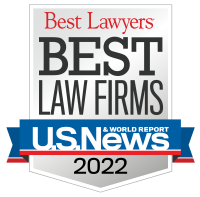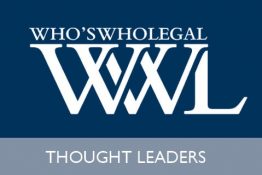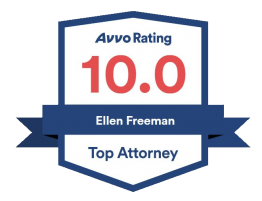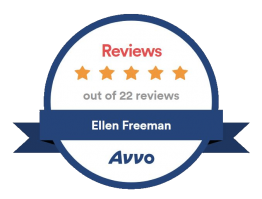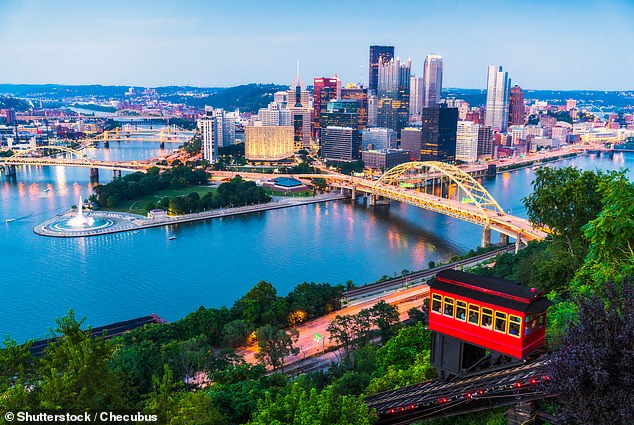
Rudolph (Rob) Houck
March 13, 2019
In the summer of 2017, we moved back to Pittsburgh¹ after almost 40 years in New York City. I now tell
my friends in Europe where I live and get blank stares. This is not criticism. No American has any idea
where Essen or Graz is, and most do not know much about Pittsburgh except for its sports teams. I am
not suggesting that anyone should take a vacation in Pittsburgh. It is somewhat isolated and is not
among the 10 or so tourist destinations in America². However, I recommend it to anyone: 1) looking for
a US location for a high tech, machinery, healthcare or chemical business and 2) with a son or daughter
thinking of studying at an excellent US university.
SUMMARY
- In 1750, Pittsburgh was a colonial outpost, directly connected to George Washington and the 7
Years’ War. - 1850-1960 it was the US center of heavy industry, steel, chemicals and glass, and the source of
enormous fortunes. Many industrialists had homes here and in New York. Much of this wealth
was spent on art now forming the core of great museums in New York and Washington. - The city’s decline and rebirth occurred between 1970 and the present, with white collar (and no
tie) jobs replacing rust belt, blue collar ones. The transition was painful but helped greatly by
cultural institutions and foundations funded with old wealth.
INTRODUCTION
Pittsburgh is still known for heavy industry, especially steel, and pollution. The football team is the
Steelers and the city is still known as Steel City. For much of the 20th Century, Pittsburgh attorneys took
a clean shirt to the office so they could change shirts after lunch. Dresser drawers had special lids, to
seal out coal dust. Pittsburgh’s wealthy (and there were many) built in-city mansions but later moved to
cleaner suburbs. In the 1950’s the city began to clean up its air. The biggest friend of the environment
was the collapse of the steel industry in the 1970’s and 80’s. The last city steel mill closed about 1983.
Today, the biggest employers are health care, universities and high tech – all much cleaner. But the
reputation remains and Pittsburghers are proud of it.
Pittsburgh has what might be the most dramatic entrance of any city in the world. Coming from the
airport, one enters a long tunnel through Mount Washington. Finally emerging into the light, one is –
BANG! – immediately on a bridge over one river with a view of two others and the tall buildings of
downtown Pittsburgh. Youtube has several videos showing the entrance.
GEOGRAPHY
The geography of Pittsburgh determined its development. The city itself is very hilly, similar to
Stuttgart or Zurich³. It developed at the confluence of three rivers: the Monongahela from the south
joins the Allegheny from the north and they form the Ohio which flows west. After almost 1,000
miles, the Ohio joins the Mississippi at Cairo, Illinois to flow south another 1,000 miles to New
Orleans and the Gulf of Mexico. Other cities connected to Pittsburgh by water include Cincinnati and
St. Louis. Pittsburgh has 446 bridges, the most of any town in the world except possibly Venice.
Pittsburgh is separated from early colonial towns like New York, Philadelphia and Baltimore by the
Allegheny Mountains, part of the Appalachians. The Alleghenies cut through Pennsylvania from
northeast to southwest. They are not nearly as high as the Rocky Mountains, but they are a
seemingly endless series. So earlier settlers were faced with one difficult climb through deep forest
followed by another and another. No river flows east-west, making Pennsylvania (and other Atlantic
coast states) difficult to cross. Pittsburgh was the first settlement to the west of these hills on a river
navigable to the new frontier. During much of the 19th century, therefore, Pittsburgh was where
anything heavy or fragile was made.
Pittsburgh was also the site of significant coal deposits, needed for coke and steel production and
the main source of energy throughout the 19th and most of the 20th centuries. Heavy products such
as steel could be readily transported using the river system.
So just where IS Pittsburgh? It is in Pennsylvania, a state 1/3 rd the size of Germany and 1.5 times the
size of Austria, a state bigger in population than Belgium or Greece. Pittsburgh is 250 miles from
Washington, DC, 300 miles from Philadelphia (think Berlin to Frankfurt or Vienna to Nuremberg) and
375 miles from New York City. It is the same latitude as mid-way between New York City and
Philadelphia, the same as Ankara, Turkey. It is the same longitude as Miami and Western Ecuador.
HISTORY
Native Americans inhabited western Pennsylvania for thousands of years. Pre-historic burial mounds
are close by. The European period began about 1710 with the arrival of traders. European settlers
(English, Scots-Irish and then German) arrived in numbers in 1748 as part of the Ohio Company, a
land speculation company based in Virginia and created for the development of what is now most of
Ohio and western Pennsylvania. The French were also in the region and conflicts resulted. In 1752,
Virginia sent young George Washington (yes, THAT George Washington) to Pittsburgh to persuade
the French to withdraw. Each side built forts. 2 years later, Washington’s troops clashed with the
French and he was taken prisoner on July 3, 1754. The French and Indian War / Seven Years’ War
quickly followed.
The earliest industry was boat building, followed by glass (often for bottles). By 1765 there was a
brewery in Pittsburgh. Next came steam boats. Timber was obvious but then coal and petroleum
were also found in the region. Already in 1800, Pittsburgh was the site of a book publisher. The War
of 1812 (the US fought against Britain and Canada in the North American extension of the
Napoleonic Wars) cut off goods from England and so the city began to produce iron, brass and tin
products. The war also encouraged internal trade and Pittsburgh benefited by reason of its logistical
advantages. With the advent of railroads, Pittsburgh became a locomotive manufacturing center.
In 1825, the Erie Canal opened and reduced Pittsburgh’s role as a logistical center. Also, other cities
farther west on the Ohio River grew up – mainly Cincinnati, Louisville and St. Louis. 1825 was the
same year that the Marquis de Lafayette visited Pittsburgh.
In 1834, the German language newspaper Freiheits-Freund began publication. The last German
language newspaper in Pittsburgh ended publication in 1942.
In 1842, Charles Dickens visited Pittsburgh and wrote that “Pittsburgh is like Birmingham in
England…and is famous for its iron works.”
The American Civil War and resulting arms production also helped the city. The largest single loss of
civilian lives during that war occurred in Pittsburgh when an arsenal blew up. By the end of the war
(1865), over ½ of the nation’s steel and over 1/3 rd of all US glass were produced in Pittsburgh. Steel
made by city firms ended up in rails for the Panama Canal and Trans-Siberian railroad. Later, city
steel built the Empire State Building and the Golden Gate Bridge.
In 1870, oil was first drilled on a commercial basis. Pittsburgh had an early oil refinery. The western
Pennsylvania oil industry peaked in 1890, in part due to the discovery of oil in Texas, Oklahoma and
Louisiana. Gulf Oil (a Mellon company) operated from Pittsburgh from 1901 until 1985, when it
merged and left the city.
Besides lumber, coal and oil, Pittsburgh was a center of atomic power. The Shippingsport Nuclear
Power Plant was the first (1957) civilian source of electricity from nuclear power. Today, natural gas
from fracking has resulted in Shell’s construction of an ethane catalytic “cracker” to make use of
abundant, cheap gas for use in plastics.
In 1910, Pittsburgh was the 8th largest city in America. In 1950, Pittsburgh reached its greatest
population. On a regional basis, Pittsburgh’s population ebbed and flowed from a high of 1.8 million
in 1970 to its current level of 1.7 million. The decline was caused by depletion of local natural
resources, competition from Southern cities with weaker unions, and international competition as
Europe and Japan recovered from WWII.
PITTSBURGH MILESTONES
The boat for Lewis & Clark’s 1804-6 investigation of the Louisiana purchase (most of the Western USA)
was built in Pittsburgh.
The Reform movement of Judaism started in Germany. But, in 1885 a gathering of American Rabbis
adopted the Pittsburgh Platform which laid out the guiding ideas of the Reform movement for American
Jews.
In 1899, Pittsburgh had 21 breweries.
Aluminum products became practical due to the process of extracting aluminum from bauxite ore by
electrolysis which C. M. Hall developed in Pittsburgh(4). The Hall–Héroult process reduced the price of
aluminum by a factor of 200. His company became Alcoa.
In May 1918 representatives of the Czech and Slovak communities signed the Pittsburgh Agreement,
setting forth their intention to join together to form Czechoslovakia. Tomas Masaryk signed and later
became the head of the new nation.
During the 1930’s, German Jews looked to the US for a representative who could negotiate with Nazi
officials to buy the release of imprisoned German Jews. German Jews were not permitted to enter
German public buildings. The Warburgs selected David Glick, a Pittsburgh lawyer who spoke German. He
spent 3 years in Berlin meeting with top Nazi officials.
Between 1870 and 1955, Pittsburgh was the scene of many strikes and some demonstrations which
ended violently. Both the American Federation of Labor (1881) and the Congress of Industrial
Organizations (1937) were founded in Pittsburgh.
The University of Pittsburgh was the first major American university to insist that its black football player
(Bobby Grier) be allowed to play against an all-white Georgia Tech football team in the 1956 Sugar Bowl.
Georgia’s governor threatened to not allow Georgia. Tech to play if Grier dressed. Pitt did not back
down. Georgia Tech was the first southern school to play against a black.
Earlier that year, a B-25 ran out of fuel, landed in the Monongahela River, sank and was never found.
The 2009 G-20 Conference was held in Pittsburgh, with meetings at the Lawrence Convention Center
and the Phipps Conservatory (a 5-minute walk from our apartment). It focused on the economic effects
of the financial collapse of 2008.
INHABITANTS
Pittsburgh is small geographically – only 150 sq. kilometers. In 1910 it was the 8 th largest city in America.
Its population high was in 1950 when it had 675,000 inhabitants. By 2013 it had dropped to 68 th place.
But if it had expanded its area as larger cities did, it would be in 9 th place. It now has 300,000 people
within the city limits and 2.36 million in the metropolitan area. It is more densely populated than 5 of
the top 10 cities in the US. 64% of its inhabitants have a post high school education. Compared with
Europe, it is about as densely populated as Stockholm or Bordeaux, more so than Munich or Berlin.
1870 to 1920 were the boom years, when the city’s population grew 700%, largely due to European
immigrants, from Britain, Ireland, Germany, Italy, the Balkans, Austro-Hungary, Russia and Ukraine.
The next wave of immigrants came from the rural South and was largely African-American. Ethnically
it is today 65% white and 25% black. 17% of the residents in the Squirrel Hill neighborhood are Asian.
Because its hills, rivers and bridges created barriers, neighborhoods grew up around a local, ethnic
church and small areas were known to be. As ethnic barriers have been lost and people more mobile,
these distinctions have declined. The University of Pittsburgh’s Cathedral of Learning has charming
(some say kitschy) “nationality” class rooms reflecting the styles of 30 countries.
Pittsburgh ranks 18th in the proportion of its inhabitants who have college degrees and 4th in the
proportion of US cities with advanced degrees.
CULTURE
Pittsburgh is home to several excellent art and history museums, world-recognized symphony and opera
companies, theater and dance companies, a good zoo, aquarium and aviary and many excellent
universities. Tickets to the symphony and opera are less than half the cost of ones to the Met or NY
Philharmonic. The Pittsburgh Symphony has an Austrian conductor and will perform this fall in Hamburg,
Berlin, Vienna and Amsterdam. Other resident conductors have included Victor Herbert, Fritz Reiner,
William Steinberg, (Berlin-born) Andre Previn and Loren Maazel. The city also has successful sports
teams in football, baseball, soccer (Fussball) and hockey. The sports stadia are excellent. The county has
a great number of golf courses, including Oakmont, where the PGA tour plays. Carnegie Museum is the
home of the “International” art exhibit, started by Andrew Carnegie. Artists from Germany, Austria and
Switzerland are represented this year. The painters Mary Cassatt and Andy Warhol were born in
Pittsburgh. Warhol went to Carnegie Mellon and, while still a student there, was referred to in a CMU
publication as a “huckster.” A Pittsburgh museum is devoted to his work.
The National Gallery in Washington was a gift of Andrew Mellon. The Frick Museum in New York City
(with three paintings by Vermeer) is based on Henry Clay Frick’s collection. Carnegie Hall… Less well
known is G. David Thompson. In 1960, the Kunstsammlung Nordrhein-Westfalen in Düsseldorf was
established with the purchase of 88 works by Paul Klee from Thompson’s collection, brokered by Basel
art dealer Ernst Beyeler. In the early 1960s, Thompson sold his entire Alberto Giacometti collection of 70
works to Beyeler, and it was divided between the Kunsthaus Zürich, the Basel Kunstmuseum and the
Kunstmuseum Winterthur.
ARCHITECTURE
Pittsburgh is perhaps best known for being close to Frank Lloyd Wright’s iconic masterpiece
Fallingwater. Just a few miles away is a second Wright home, Kentuck Knob (which has a
sculpture garden including a section of the Berlin Wall).
In 1804, the Harmonists – a German separatist sect from Wuerttemberg – founded Harmony,
Pennsylvania, and in 1825 founded Old Economy These settlements contain significant brick and frame
houses, shops and communal buildings, many with Swabian characteristics.
Allegheny Courthouse and the adjoining jail were designed by Henry Hobson Richardson, complete with
the connecting “Bridge of Sighs.”
The Phipps Conservatory was designed by Lord & Burnham in 1893. It was the sight of the G-20
Conference in 2009.
A charming Victorian neighborhood on the North Side is the birthplace of Gertrude Stein. Mary Roberts
Rinehart (mystery writer) lived there. Emmanuel Episcopal Church was designed by Henry Hobson
Richardson and Calvary United Methodist Church has stained glass by Tiffany.
In the Squirrel Hill neighborhood are homes designed by Walter Gropius, Marcel Breuer, Richard Meier,
and Robert Venturi.
Mellon Hall at Duquesne University was designed by Mies Van Der Rohe.
The first buildings clad with aluminum were built in Pittsburgh.
UNIVERSITIES
Pittsburgh is home to many universities.
The University of Pittsburgh is a state university and the largest in the region. Its most famous
faculties are philosophy, engineering, history and medicine.
Carnegie Mellon University has brought attention and employment to Pittsburgh as a leading center
of computer engineering and artificial intelligence. The Robert Bosch Stiftung established one of its
US centers at CMU in 1990. CMU also has excellent schools of business, theater and music. It
attracts an amazing number of ethnically Asian students. 6,285 CMU students are foreign.
Duquesne University has a law school which sponsors a work-study summer in Cologne, Strasbourg
and Luxembourg.
The Pittsburgh region is rich in organizations that helps newcomers to connect and expand social or career networks. A comprehensive list would be impossible, but here are few places to start.
| Enrollment | |
| University of Pittsburgh | 29,000 (3,000+ foreign) |
| Allegheny Community | 18,000 |
| CMU | 13,900 (6,285 foreign) |
| Duquesne University | 9,500 |
| Robert Morris | 5,400 |
| Point Park University | 4000 |
| Chatham University | 2,500 |
| Carlow University | 2,250 |
| 84,550 TOTAL |
FOUNDATIONS
Pittsburgh-based foundations were essential to the city’s transformation from heavy industry to high-tech. The largest of these are:
- Mellon Foundation $2.2 billion
- Heinz Foundation $1.5 billion
- Pittsburgh Foundation $1.0 billion
- Hillman Foundation $400 million
INVENTIONS
First Ferris wheel: The first Ferris wheel was built in Chicago, but it was conceived in the 1890’s by Gale Ferris Jr, a Westinghouse engineer. He sketched the idea on a restaurant napkin and showed it to some
of his skeptical engineer friends. Undaunted, Ferris used his own money for the blueprints, and then he formed a joint stock company to attract the necessary wealthy investors. Over 100,000 parts went into his initial build, including two engines, a 20,000-pound sprocket chain, and at its core, a 90,000-pound axle. The monstrosity was 264 feet (80 meters) tall and held more than 2,000 passengers.
First drive in gas station: December 1913, the Gulf Refining Co. opened the first drive in gas station.
First movie theater: In 1905, two Pittsburghers opened the first movie theater “Nickelodeon” and charged five cents (a nickel) for people to watch The Great Train Robbery, a 10-minute movie. Within a
few months, there were more than a dozen of these theaters in Pittsburgh, and two years later, there were thousands of them across the USA.
First Baseball Stadium: In 1909 the first all-steel-and-concrete ballpark in the U.S. opened, featuring a three-tier grandstand, luxury suites, ramps and elevators.
Bingo – The first Bingo game was invented in Pittsburgh in the early 1920s. Hugh J. Ward came up with the concept and began running it at local carnivals. He secured the copyright and wrote the book of rules in 1933.
First Commercial Radio Station: On November 2, 1920, KDKA in Pittsburgh went on air with the first-ever commercial radio broadcast.
Jeep – The original Jeep was developed and built in nearby Butler in 1940 by the American Bantam Car Company.
Pull-Tab Can – Alcoa created the first aluminum-faced skyscraper in 1953 and developed the first pull-tab on cans in 1962.
Nuclear Power – Also in 1953, the Westinghouse Electric Company provided a prototype engine to power the world’s first nuclear submarine, the U.S.S. Nautilus. It also produced the first automatic washing machine – non-nuclear.
Mr. Roger’s Neighborhood/WQED – In 1954 the first public tv station was formed and Fred Rogers began a program which turned into Mr. Roger’s Neighborhood, an icon of children’s education and emotional support. Mr. Roger’s widow lives in our building. Tom Hanks plays Fred Rogers in the recent movie.
Polio Vaccine: In 1955, Dr. Jonas Salk (University of Pittsburgh School of Medicine) announced the creation of a vaccine against polio.
First Retractable Dome Roof – In 1961, the Civic Arena was opened, the first stadium with a retractable dome roof.
Environmental Protection – The book Silent Spring (1962), authored by Pittsburgh’s Rachel Carson, resulted in a nationwide ban on DDT and other harmful pesticides, spawned the grassroots environmental movement, and eventually led to the creation of the U.S. Environmental Protection Agency.
Night of the Living Dead – This movie cult classic was filmed in a Pittsburgh area shopping mall that same year (1968) with a budget of $114,000.
Mr. Yuk – This familiar (to Americans) symbol, meant to warn children against poisons, was developed at Children’s Hospital in Pittsburgh in 1971.
Big Mac – The McDonald’s Big Mac was developed in the Pittsburgh area in 1968.
Robotics – In 1979 Carnegie Mellon University opened the first robotics institute in America.
Smiley Face Emoticon – In 1982, a Carnegie Mellon computer scientist had the idea of adding emotion and fun to everyday emails, chats, and newsgroup posts. He invented the sideways smiley face.
HISTORIC INDUSTRIES
Important US industries once based in Pittsburgh include Westinghouse, Koppers, Allegheny Ludlum, Mine Safety Appliance, Gulf Oil, Copperweld, Alcoa, US Steel. Rockwell International, H.J. Heinz, PPG and Mesta Machines. Most (but not all) of these companies were bought up or went bankrupt as the steel industry moved out of the United States.
Today, six companies in the Fortune 500 are based in Pittsburgh, including:
- US Steel (#176)
- PNC Financial Services – 6 th largest US bank (#192)
- PPG Industries (#198)
- J. Heinz (#272)
- WESCO International (#360)
Half of the 20 largest German-owned companies have a presence in Pittsburgh. 170 companies related to Germany, Austria or Switzerland have affiliates in Western Pennsylvania. 70 of them are manufacturing companies. The companies include:
- ABB
- Bayer
- Bosch
- Draeger
- Fraunhofer
Lanxess - Schindler
- Siemens
- Thyssen
- Krupp
BASF - Voest-Alpine
- Leybold
- Ardex
The big, “new economy” employers include Google, Apple, Intel, Uber and Rand.
PERSONALITIES
Besides the titans of industry already mentioned, people with Pittsburgh connections include:
- Nellie Bly – Born Elizabeth Cochran, she became an early journalist for the Pittsburgh Dispatch. She reported first on women’s issues but soon expanded to corruption in Mexico. In New York, she went under cover in an insane asylum and published Ten Days in a Mad-House in 1887. During World War I she reported from the Eastern Front.
- Stephen Foster – 19th Century composer
- Gertrude Stein – novelist, poet Mary Cassatt – painter
- August Wilson – playwright
- Gene Kelly – film star
- Sharon Stone – film star
- Jimmy Stewart – film star
- Renee Fleming – opera singer
- Henry Mancini – composer
- Many black jazz musicians including Ahmad Jamal, Art
Blakey, Billy Eckstine and Errol Garner
FOOD and DRINK
The mix of young, highly paid techies and low rents has attracted lots of chefs to Pittsburgh. It is regularly listed as one of the top restaurant cities in America. The city also has lots of farmers’ markets. Wine takes a back seat to beer, made more than 50 “craft” breweries. The region has 10 distilleries, one tied to Pittsburgh’s role in the Whiskey Rebellion of 1794 – an anti- alcohol tax protest.
LAW FIRMS
Since many of my German friends are lawyers, I point out that two law firms that were founded in Pittsburgh have offices in Germany: Reed Smith and KL Gates. My theory is that many US law firms with offices in Europe come from the US “rustbelt” because, as in Pittsburgh, their traditional industrial clients died off or moved away. These law firms had to expand from their home cities, first to other US cities and then to Europe, to survive. Reed Smith’s biggest office is in London, but Brexit may change that.
BAD PARTS
So, what are the bad parts? Probably the worst part is the fact that Pittsburgh has struggled to maintain non-stop flights to Europe. British Airways offers seasonal flights to London and Condor offers them to Frankfurt. For 3-6 months of the year, most international flights are through the NYC area or from Washington, DC. The other side of this is, however, that getting to and through the Pittsburgh airport is
much faster than at NYC airports and once backed away from the gate, the plane is quickly in the air, not number 21 in line.
As with much of the United States, the next interesting town is pretty far away. Cleveland is only 2 hours by car and has excellent museums, a great symphony, charming neighborhoods and major hospitals. The next interesting city is Washington, DC, 4 hours by car. New York can be reached by train, but it takes 8-9 hours, albeit through beautiful countryside.
——————————————–
1 Originally spelled Pittsbourgh (Scottish spelling) and later spelled Pittsburg.
2 New York, Washington, Chicago, Boston, Philadelphia, Charleston, New Orleans, Los Angeles, San Francisco.
3 Both Zurich and Pittsburgh have “inclines” – funiculars. Pittsburgh once had almost 20. German-Swiss trained engineers built them. Two still operate.
4 The top of the Washington Monument obelisk is made of aluminum and before installation was shown in the window of Tiffany’s. Aluminum sold for $1.10 an ounce and was mainly used for jewelry.
——————————————–
Rudolph (Rob) Houck
March 13, 2019



